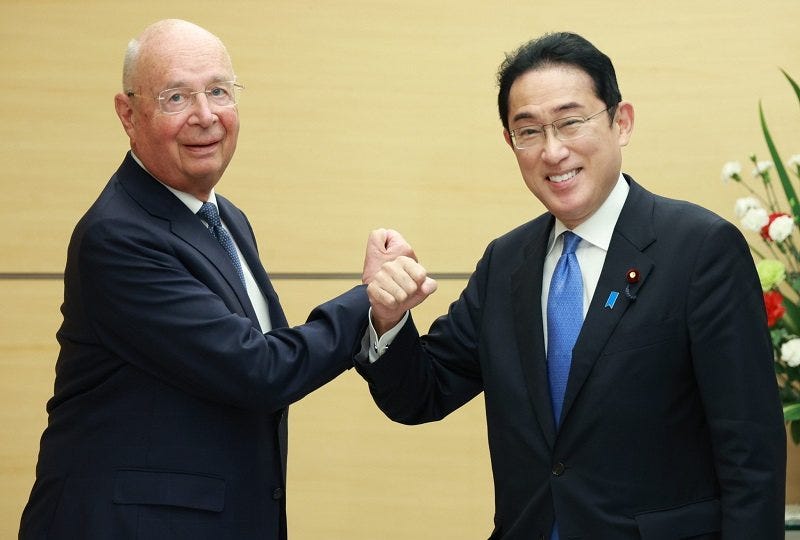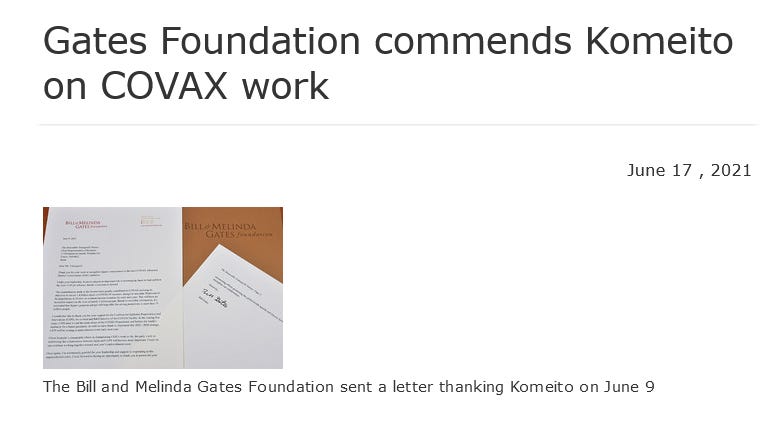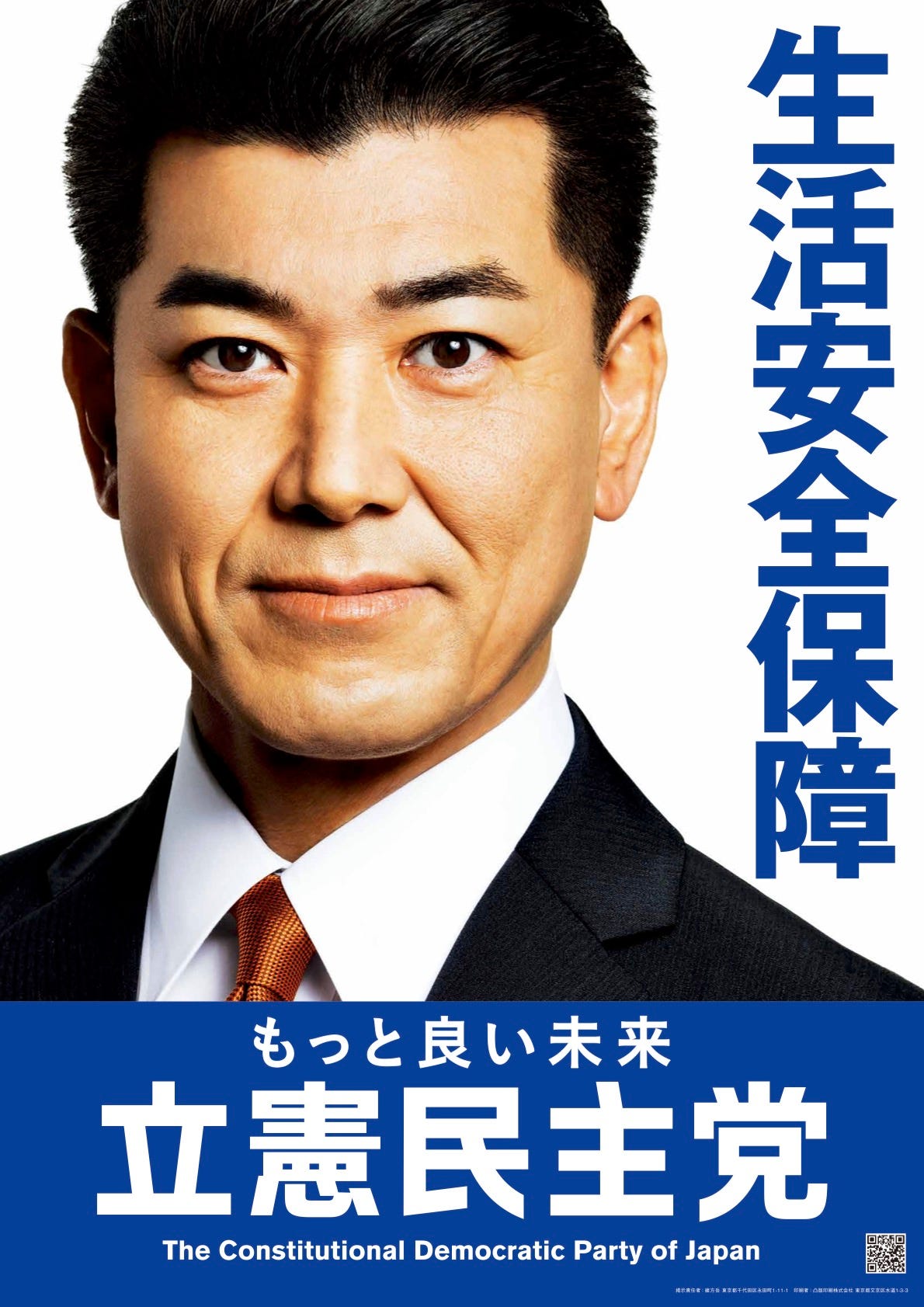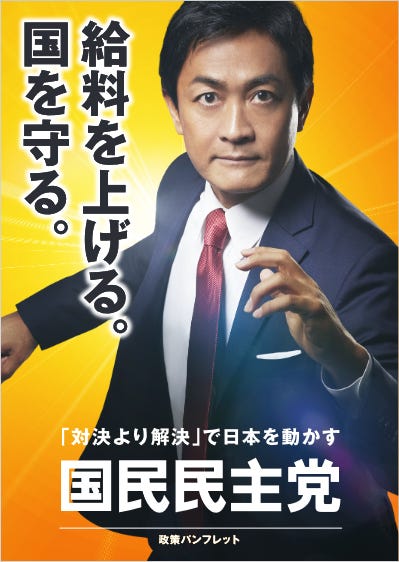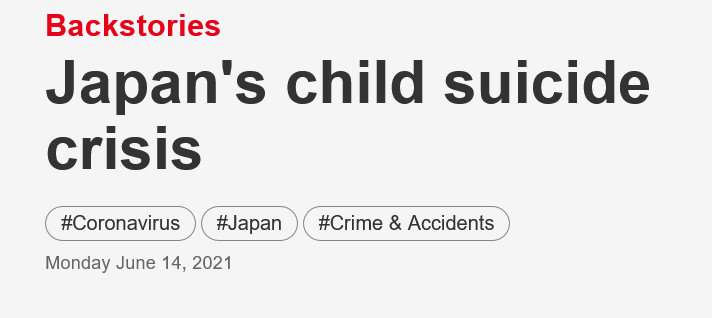Upper House Election: The Covid polices of Japan's political parties
Japan is holding elections on 10 July for 124 of the 245 seats in the Upper House (The House of Councillors) in the Westminster-style bicameral national parliament (The Diet). The Lower House (House of Representatives) is more powerful, and the Upper House acts similarly to the Canadian Senate or the UK House of Lords. After the last Upper House election, the makeup was as below.

Before we go on, let’s clarify the actual choice facing the Japanese electorate.
Yep. Voters in Japan, like voters elsewhere, get to choose which puppets will implement the WEF’s agenda in their country. Now, that’s clear, let’s look at what policies the parties are proposing Covid-wise (for defense, economic, and energy polices, see here). I’ll limit myself to looking at the good, the bad, and the ugly being proposed by the 6 most popular parties since 6 is the WEF’s favourite number judging by its logo.
The Governing Coalition:
LDP: Right-wing conservative (manifesto)
The good: The manifesto doesn’t mention strengthening fines for non-compliment businesses during states of emergency, which was one policy they recently proposed. That’s no guarantee they won’t do it though.
The bad: Since the LDP has been running Japan’s Covid shit show, their policies are essentially more of the same: continuing Covid measures (e.g., 24/7 masking, pointless event restrictions), financial support for industries negatively impacted by the LDP’s Covid policies, etc.
They also say “Toward reviving movement (of people), Covid measures on public transport and at the border will be ensured.” Based on past behaviour, this presumably means they’ll keep treating overseas tourists like biohazards and will slam the border shut whenever “Cases are rising!” hysteria kicks off again.
New polices include securing domestically produced treatments and vaccines (i.e., getting Japanese pharma companies on the Covid gravy train) and “Strengthening control tower capabilities for future crisis” (i.e., setting up the Japanese CDC).
The ugly: The LDP also wants to realise its long-held goal of constitutional reform to enable the cabinet to rule by decree whenever the prime minister declares an emergency, which I’ve already written about. The reason this is Covid-related is that the emergency clause would allow the government to implement lockdown restrictions, which it can’t under the current constitution.
Komeito: right-wing conservative (manifesto)
The good: Increased research into and support for sufferers of long Covid.
The bad: Same as the LDP, they want to continue Covid measures, support domestic production of drugs and jabs, and set up a Japanese CDC.
The ugly: Komeito also supports greater restrictions on basic rights during emergencies, but its leader, Natso Yamaguchi, has said he wants “individual laws to restrict private rights in times of emergencies” rather than the free hand the LDP’s proposed emergency clause would give the government. Talk about the thin end of the wedge.
You might also like to know that Komeito has a cozy relationship with the Gates Foundation.
The Opposition
Constitutional Democratic Party of Japan: Left-wing liberal (manifesto)
The good: Party leader Kenta Izumi has publicly opposed adding an emergency clause, saying “It goes against the guarantee of the people's rights and constitutionalism."
The bad: CDPJ plays the centre-left controlled opposition role the same as Labour in the U.K., so it also supports continued Covid measures, expanding PCR tests (i.e., wasting money to test healthy people), supporting domestic production of jabs, etc.
The ugly: The CDPJ proposes setting up a Covid Measures Committee in The Diet “to assess the government’s response objectively from the perspective of experts.” I think Japan’s “Covid experts” have done quite enough damage already, thank you.
Democratic Party for the People: Centrist, reformist (manifesto)
The good: The DPFP proposes reassessing the mask recommendation for children, excessive Covid measures in schools, Covid restrictions, and Covid’s classification as a Designated Infectious Disease [1]. Now this is more like it!
The bad: In addition to setting up a Japanese CDC and supporting domestically produced drugs and jabs, the DPFP wants to expand PCR tests and even provide periodic home tests for symptomless children to avoid a repetition of the nationwide school closures in 2020. Japanese children could benefit from many things right now, but more Covid tests isn’t one of them.
The ugly: The party wants “to popularise digital vax/negative-test passports to liberate people from the self-restraint lifestyle”. So when they said “reassess Covid restrictions”, they meant “become more like Austria”.
The DPFP proposes setting up a constitutional court to check the government stays within the constitution. However, it also wants to add an emergency clause, but one that defines limits on government powers during emergencies. To be honest, this seems like the constitutional reform equivalent of “Just two weeks to flatten the curve.”
Nippon Ishin no Kai (Japan Innovation Party): Right-wing populist (manifesto)
The good: Ishin wants to reclassify Covid as a Level 5 infectious disease (the same level as the flu) [1]. This would prevent prefectural governors from declaring states of emergency in order to bully bars and restaurants whenever PCR positives go up.
The bad: Even if Covid is lowered to Level 5, Ishin will maintain most current Covid measures. Like other parties, Ishin wants domestically produced jabs and a Japanese CDC. But since its support base is primarily in Kansai (in and around Osaka and Kyoto), it wants to set up Japanese CDC offices in Greater Tokyo and Kansai. You can’t have too much of a bad thing, apparently.
The ugly: Similarly to DPFP, Ishin supports adding an emergency clause to the constitution and wants to create a constitutional court to ensure emergency powers aren’t abused. To remind ourselves why Japanese politicians can’t be trusted to act responsibly with more powers, let’s remember that Ishin’s signature Covid policy was a “mask dining” rule in Osaka.
Japanese Communist Party: left-wing socialist, not actually communists (manifesto)
The good: The JCP is opposed to constitutional revision.
The bad: Being commies, they want continued Covid measures and more PCR tests.
The ugly: They want to increase the budgets of the National Institute of Infectious Diseases and regional public health centres by 10 times. Were you expecting fiscal restraint?
So there you go. A truly uninspiring lineup to choose from. In fact, Japanese political parties are like Covid vaccines: rather than the agony of choice, they offer the people the choice of agony.
[1] Japan has a 5-level classification system for infectious diseases, with Ebola at Level 1 and influenza at Level 5. However, Covid is given a special classification as a Designated Infectious Disease (DID), which enables states of emergency to be declared in prefectures or quasi-emergency measures to be implemented in municipalities to stop it spreading.
If you’re wondering “Does that mean Covid is classified above Ebola?”, the answer is “Basically, yes”. Japanese media refer to DIDs as being treated like Level 2 infectious diseases like SARS and MERS (e.g., cases can be prohibited from going to work), but prefectural governors can call for “self-restraint” from leaving the house to stop the spread of DIDs but not Level 1 infectious diseases. This is the reason Kishida has opposed reclassifying Covid: it would take away governors’ ability to implement state-of-emergency or quasi-emergency measures. Of course, I think that’s the main reason Covid should be reclassified.
However, even if Covid is lowered to Level 5, the government’s Covid guidelines (e.g., masks, masks, masks!) would still be in place since they were never legally enforceable to begin with.




